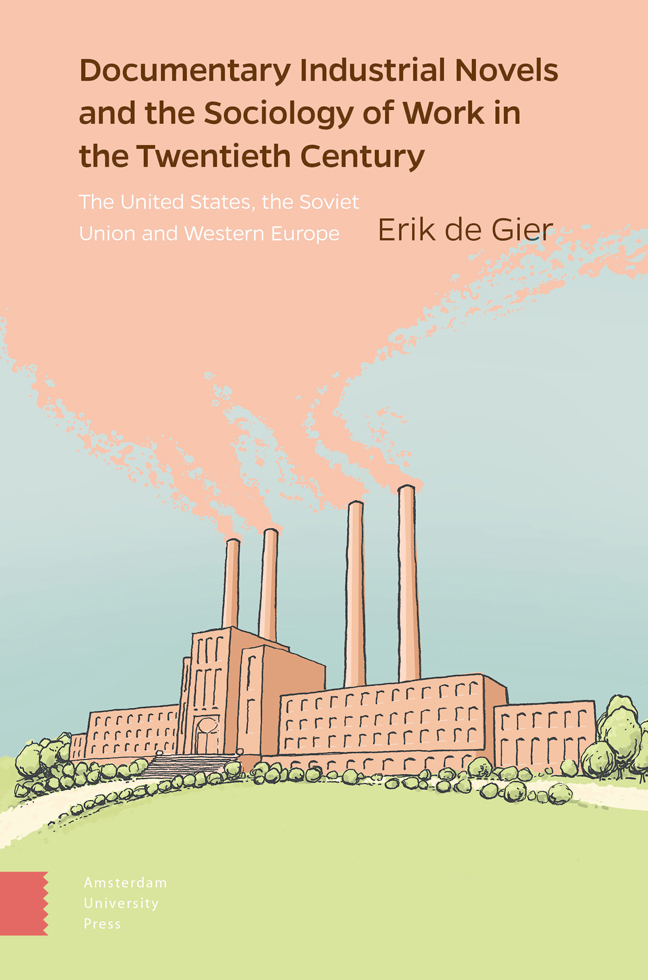 Documentary Industrial Novels and the Sociology of Work in the Twentieth Century
Documentary Industrial Novels and the Sociology of Work in the Twentieth Century Published online by Cambridge University Press: 20 February 2024
Abstract
The focus in this chapter is on the mimicking of the Americanization of production processes in the Soviet Union during the 1920s and 1930s. In this period the Soviet Union underwent a process of crash industrialization, with the intention to surpass even the United States and become the world's foremost industrial nation. Architecture, arts, film, photography, and industrial or ‘factory’ novels were marshalled to contribute to this end. Based on the formal state ideology of socialist realism, many industrial novels, mainly propagandistic, were written by individual writers as well as writers’ collectives. Generally, writers of factory novels were seen as ‘engineers of the soul’. Four of these novels are analysed here against the background of the Americanization of Soviet industry.
Keywords: Soviet Union, American tempo, Fordism, shock brigades, Stakhanovism, industrial novels.
Introduction
Like the United States and Weimar Germany, the Soviet Union was at the forefront of writing Modernist industrial novels in the 1920s and 1930s. But as has been argued, in contrast to the US and European countries, the primary goal of Soviet documentary literature was propagandistic. This implied denying the existence of a class-struggle in the Soviet Union between capital and labour, as well as ‘highlighting the great progress being achieved across the vast nation’ (Freeman, 2019, p. 211). The monthly large-format magazine USSR in Construction, published between 1930 and 1941 in Russian, English, German, French, and partly also in Spanish, combined photography and journalism. Its illustrative issues were devoted to dams, canals, hydroelectric plants, railroads, car and tractor factories such as the Gorky Automobile Works (called the ‘Soviet Detroit’) and the gigantic Magnitogorsk Iron and Steel Works. Famous photographers such as Alexander Rodchenko were involved, as well as ‘the number one’ writer of the Stalin Era, Maxim Gorky. Next to this monthly magazine, comparable documentary books were published, such as, for example, the seven-volume work Heavy Industry (1935). In 1931 Maxim Gorky initiated a big documentary project on the History of Factories and Plants. By 1938 this project had resulted in the publication of 30 volumes. Another notable documentary work of the 1930s was Those who Built Stalingrad, as Told by Themselves. This was an oral history of the Soviet and foreign workers who built the Tractorstroi (tractor factory) of Stalingrad. Renowned western industrial photographers and cinematographers went to the Soviet Union to picture the main industrial sites of the First Five-Year Plan.
To save this book to your Kindle, first ensure [email protected] is added to your Approved Personal Document E-mail List under your Personal Document Settings on the Manage Your Content and Devices page of your Amazon account. Then enter the ‘name’ part of your Kindle email address below. Find out more about saving to your Kindle.
Note you can select to save to either the @free.kindle.com or @kindle.com variations. ‘@free.kindle.com’ emails are free but can only be saved to your device when it is connected to wi-fi. ‘@kindle.com’ emails can be delivered even when you are not connected to wi-fi, but note that service fees apply.
Find out more about the Kindle Personal Document Service.
To save content items to your account, please confirm that you agree to abide by our usage policies. If this is the first time you use this feature, you will be asked to authorise Cambridge Core to connect with your account. Find out more about saving content to Dropbox.
To save content items to your account, please confirm that you agree to abide by our usage policies. If this is the first time you use this feature, you will be asked to authorise Cambridge Core to connect with your account. Find out more about saving content to Google Drive.